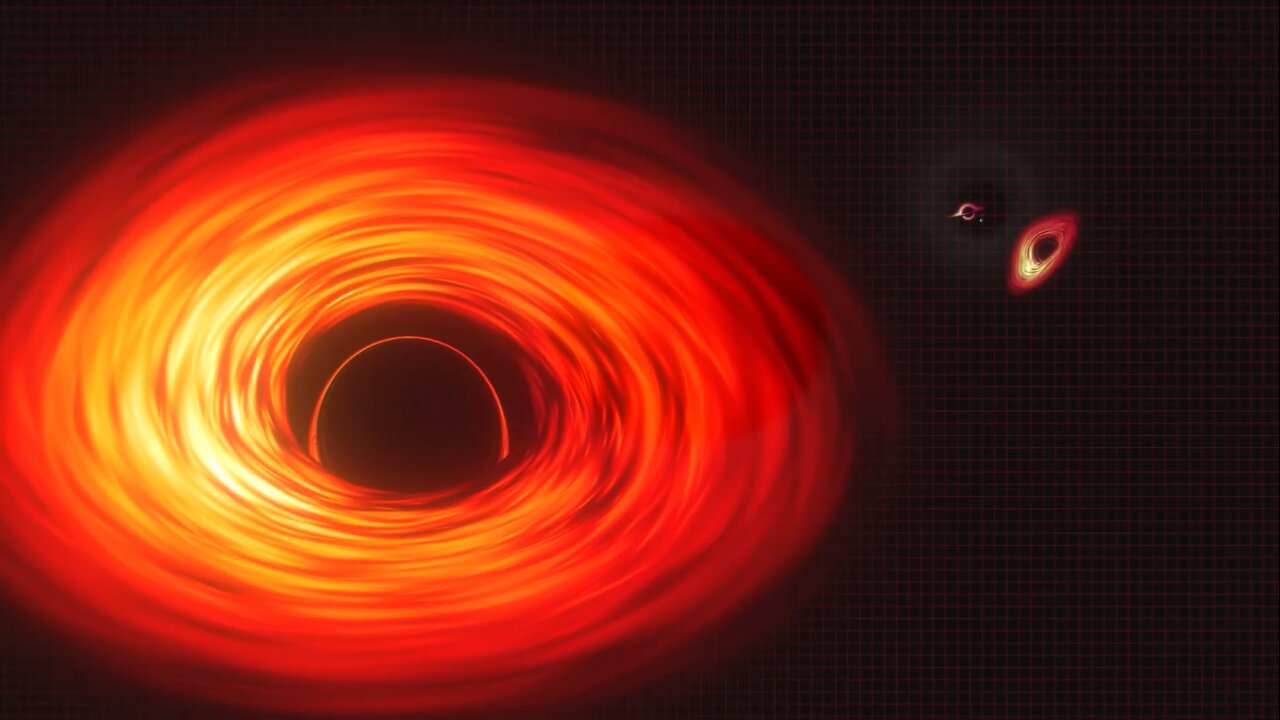Premium Only Content

NASA Animation Sizes Up the Biggest Black Holes
A previous version of this video mislabeled the orbit of Saturn as the orbit of Jupiter.
This new NASA animation highlights the “super” in supermassive black holes. These monsters lurk in the centers of most big galaxies, including our own Milky Way, and contain between 100,000 and tens of billions of times more mass than our Sun.
Any light crossing the event horizon – the black hole’s point of no return – becomes trapped forever, and any light passing close to it is redirected by the black hole’s intense gravity. Together, these effects produce a “shadow” about twice the size of the black hole’s actual event horizon.
The animation shows 10 supersized black holes that occupy center stage in their host galaxies, including the Milky Way and M87, scaled by the sizes of their shadows. Starting near the Sun, the camera steadily pulls back to compare ever-larger black holes to different structures in our solar system.
First up is 1601+3113, a dwarf galaxy hosting a black hole packed with the mass of 100,000 Suns. The matter is so compressed that even the black hole’s shadow is smaller than our Sun.
The black hole at the heart of our own galaxy, called Sagittarius A* (pronounced ay-star), boasts the weight of 4.3 million Suns based on long-term tracking of stars in orbit around it. It’s shadow diameter spans about half that of Mercury’s orbit in our solar system.
The animation shows two monster black holes in the galaxy known as NGC 7727. Located about 1,600 light-years apart, one weighs 6 million solar masses and the other more than 150 million Suns. Astronomers say the pair will merge within the next 250 million years.
At the animation’s larger scale lies M87’s black hole, now with a updated mass of 5.4 billion Suns. Its shadow is so big that even a beam of light – traveling at 670 million mph (1 billion kph) – would take about two and a half days to cross it.
The movie ends with TON 618, one of a handful of extremely distant and massive black holes for which astronomers have direct measurements. This behemoth contains more than 60 billion solar masses, and it boasts a shadow so large that a beam of light would take weeks to traverse it.
Music credit: "In the Stars" from Universal Production Music
Credit: NASA's Goddard Space Flight Center Conceptual Image Lab
#nasa #space #spacex #astronomy #science #universe #moon #cosmos #galaxy #earth #mars #astronaut #astrophysics #stars #elonmusk #astrophotography #physics #iss #apollo #photography #hubble #flatearth #isro #esa #rocket #spaceexploration #solarsystem #art #naturalnusantara #cosmology #hole
-
 2:03:32
2:03:32
Side Scrollers Podcast
22 hours agoMASSIVE Netflix Boycott + The TRUTH About Jimmy Kimmel’s Return + BIG Side Scrollers NEWS
35.6K16 -
 15:05
15:05
GritsGG
1 day agoFlawless Duos Victory w/ Most Winning Duo in Warzone History!
32.5K2 -
 1:53:52
1:53:52
FreshandFit
18 hours agoShe Was In 3 Domestic Violence Cases? Happy Birthday Fresh!!!
161K69 -
 2:03:22
2:03:22
Inverted World Live
10 hours agoThe Aliens Are Underwater | Ep. 117
78.8K31 -
 2:20:24
2:20:24
Badlands Media
18 hours agoDevolution Power Hour Ep. 394: The Long Game, Media Traps, and Military Signals
97.7K33 -
 2:08:38
2:08:38
TimcastIRL
12 hours agoNetflix Shares TANK, Elon Says BOYCOTT After Writer MOCKS Charlie Kirk Assassination
262K204 -
 8:48:01
8:48:01
SpartakusLIVE
14 hours agoI'M BACK || Quads w/ The Boys
95.4K9 -
 9:33
9:33
Ken LaCorte: Elephants in Rooms
17 hours ago $4.71 earnedWhy Do Black Men Love Big Butts?
41.3K26 -
 2:12
2:12
From Zero → Viral with AI
1 day ago $14.74 earned🚀 AI Marketing Isn’t Just for Big Brands Anymore — Here’s Why
55.9K11 -
 9:51:58
9:51:58
Dr Disrespect
21 hours ago🔴LIVE - DR DISRESPECT - 10 WINS ON CONTROLLER - BO7 TOMORROW
321K22